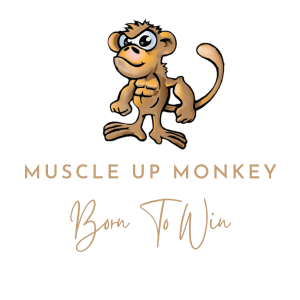Swimming is a popular recreational activity and competitive sport. It is a great way to stay fit and healthy, and it can be enjoyed by people of all ages. Swimming is a low-impact exercise that can help to improve cardiovascular health, strengthen muscles, and increase flexibility. It is also a great way to relax and have fun. Swimming can be done in a pool, lake, river, or ocean. There are a variety of strokes used in swimming, including the freestyle, backstroke, breaststroke, and butterfly. Swimming can be done alone or with a group, and it can be a great way to socialize and make new friends.
What are the benefits of Swimming?
- Improved cardiovascular health: Swimming is a great way to get your heart rate up and improve your cardiovascular health. It is a low-impact exercise that can help to strengthen your heart and lungs.
- Strengthened muscles: Swimming can help to strengthen your muscles, including your core, arms, and legs.
- Increased flexibility: Swimming can help to increase your flexibility and range of motion.
- Stress relief: Swimming can be a great way to relax and reduce stress.
- Socialization: Swimming can be a great way to socialize and make new friends.
- Fun: Swimming can be a fun and enjoyable activity for people of all ages.
What type of Swimming is best for me?
The type of swimming that is best for you depends on your goals and preferences. If you are looking for a low-impact exercise to improve your cardiovascular health, then freestyle swimming is a great option. If you are looking to strengthen your muscles, then breaststroke or butterfly may be better options. If you are looking for a fun and social activity, then swimming with a group or joining a swim team may be the best option. Ultimately, the type of swimming that is best for you is the one that you enjoy the most.
How often should I use Swimming?
The frequency of swimming depends on your goals and preferences. If you are looking to improve your cardiovascular health, then swimming 3-4 times per week is recommended. If you are looking to strengthen your muscles, then swimming 2-3 times per week is recommended. Ultimately, the frequency of swimming should be based on your individual goals and preferences.
What are the best Swimming exercises for weight loss?
Swimming is a great way to burn calories and lose weight. The best swimming exercises for weight loss include freestyle, backstroke, breaststroke, and butterfly. These strokes can help to increase your heart rate and burn calories. Additionally, interval training is a great way to maximize your calorie burn. Interval training involves alternating between high-intensity and low-intensity swimming. This type of training can help to increase your calorie burn and help you reach your weight loss goals.
What are the best Swimming exercises for improving my flexibility, posture, balance, power?
Swimming is a great way to improve your flexibility, posture, balance, and power. The best swimming exercises for these goals include freestyle, backstroke, breaststroke, and butterfly. Additionally, drills such as kickboard drills, pull buoy drills, and sculling drills can help to improve your technique and increase your power. Finally, stretching exercises such as the butterfly stretch and the breaststroke stretch can help to improve your flexibility and posture.
What equipment do I need to do Swimming exercises?
The equipment needed for swimming exercises depends on the type of swimming you are doing. For recreational swimming, you will need a swimsuit, goggles, and a swim cap. For competitive swimming, you will need a swimsuit, goggles, a swim cap, a kickboard, a pull buoy, and a pair of fins. Additionally, you may want to invest in a swim snorkel to help you focus on your technique.
| Beginner Swimming Program: | Intermediate Swimming Program: | Advanced Swimming Program: |
| Warm up 100 metres 4 x 25m Easy pace. Main set 375 metres 8 x 25m With Fins. Fins will allow you move through the water easier. Try and focus on switching your core on for better positioning and technique. Rest 20 seconds every 25m. 3 x 25m Rest With Pull Buoy. The Pull Buoy will ensure you focus on your upper body stroke. Lead with your fingertips, then hands over the elbow when you pull through the water. Try not to drop your elbow. Rest 20 seconds after each 25m. 4 x 25m With Kickboard. The Kickboard will allow you to focus on your kick. Remember to hold the board from the top and not the sides. As mentioned above, keep you core switched on for strength and try to flick your feet when you kick for better propulsion. Rest 20 seconds after each 25m. Cool Down 50 metres 2 x 25m Easy pace. TOTAL 525m | Warm up 300 metres 1 x 100m Easy pace, Choose the stroke you feel most comfortable with. 4 x 50m Steady, Take 15 secs rest in between each one. Main set 400 metres 4 x 100m Moderate effort, Take 30 secs rest in between each one. Cool Down 50 metres 1 x 50m Easy pace TOTAL 750m | Warm up 400 metres 2 x 100m Easy pace, Choose the stroke you feel most comfortable with. 4 x 50m Steady, Take 15 secs rest in between each one. Main set 400 metres 8 x 50 Moderate effort, Take 20 secs rest in between each one. Cool Down 100 metres 100m Easy pace TOTAL 900m |

